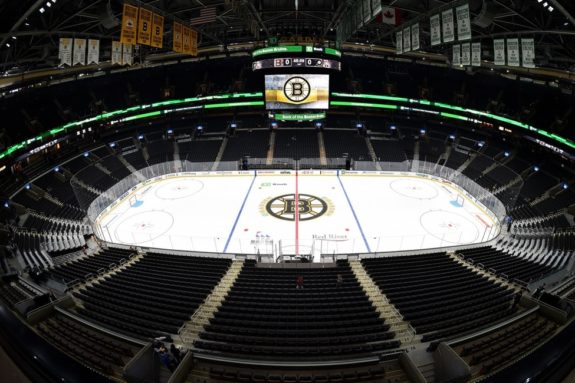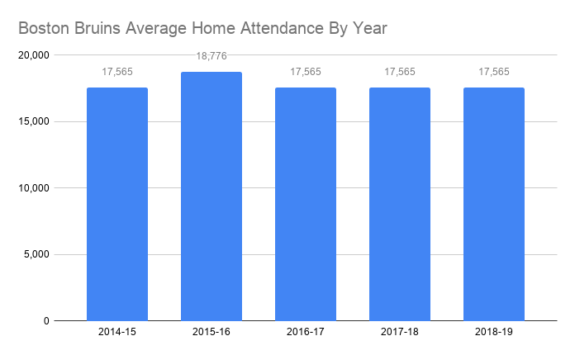How much revenue can 500 additional seats generate for the TD Garden and the Boston Bruins? Well on the second-hand market that can generate an incremental $75,500 per game. Or scaled out to a 41-game regular season, that’s an additional $3,095,500. That potential for incremental revenue is causing public relations problems in Boston.
A few weeks back I wrote a story regarding all of the changes that occurred at the arena of the Boston Bruins, TD Garden. The venue is in the finishing stages of a $100 million renovation but the most striking change has been the seats in the lower and upper bowl. To add approximately 500 or so additional seats, the legroom had to be condensed. With fans taking to social media in discontent and media covering the tight accommodations the arena public relations team issued a statement.
Overall this wasn’t the greatest approach essentially telling Bruins fans that they will have to get used to the changes. So the obvious answer is yes, fans will get used to the cramped seating at some point in time. But its certainly not the proper approach and comes across as being out of touch with reality.

So what should the Bruins and the venue be telling fans? 500 extra fans will be in the building to support the home team on the ice. That extra capacity also makes the venue more appealing to host additional events in the future such as All-Star games, concerts, and things of that nature. Of course, the statement itself didn’t acknowledge the tighter accommodations. But the president of the venue, Amy Latimer, told Boston.com about the additional seating in mid-September.
Bruins Attendance Numbers Drove Expansion
On the business side of things, the additional seats also provide the venue and the team the opportunity to have a higher upside on revenue generation. The Bruins in 2018-19 ranked 17th in the NHL in attendance averaging 17,565 per game. On the surface that seems rather odd that they would be looking to push their capacity threshold, but here’s the catch. Boston’s average capacity was 17,565, a 100% capacity rating. That rating was tied for eighth in the NHL last year.

Boston for the past five seasons has averaged a 100% capacity rating or greater. The last season the Bruins posted an average attendance under the capacity of TD Garden was in 2011-12 when they averaged 17,564, a rounding error away from 100%. The last true under capacity season for the franchise was before their 2010-11 Stanley Cup-winning season when they averaged a 99% capacity rating with an average draw of 17,388.
Related: NHL Attendance Leaves a Lot to Be Desired
The bottom line is the attendance the Bruins have been able to draw over the last five-plus seasons means there is growth upside. That upside is at the heart of the 500 seats increase in the venue. To further that point the Bruins were the highest attended road team last season averaging 19,021 fans in attendance at their road games.
Bruins and TD Garden Need PR 101
This story will likely hang around for a bit with neither the Bruins or the Boston Celtics hosting regular-season home games in the venue this season as of post. The reactions by fans and the media have been a little over the top. While it is clear there is less space the potential that it affects the bottom line negatively in attendance in 2019-20 is highly unlikely. But that doesn’t mean the team or the venue should brush this under the rug.
Being honest with fans goes a long way to ensuring there isn’t a bad taste that lingers. Coming forth and admitting the lesser space per fan is the right thing to do and giving legitimate reasons will make this PR problem go away quicker than a Zdeno Chara slap-shot.